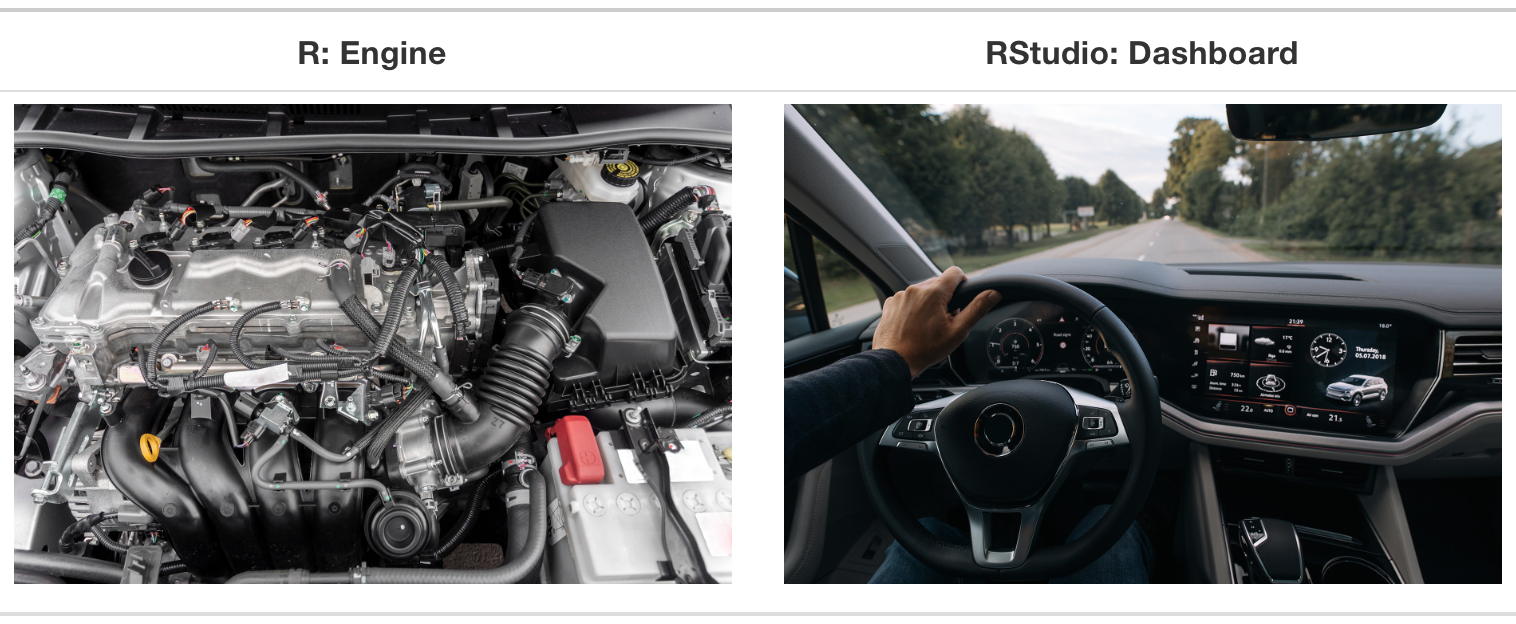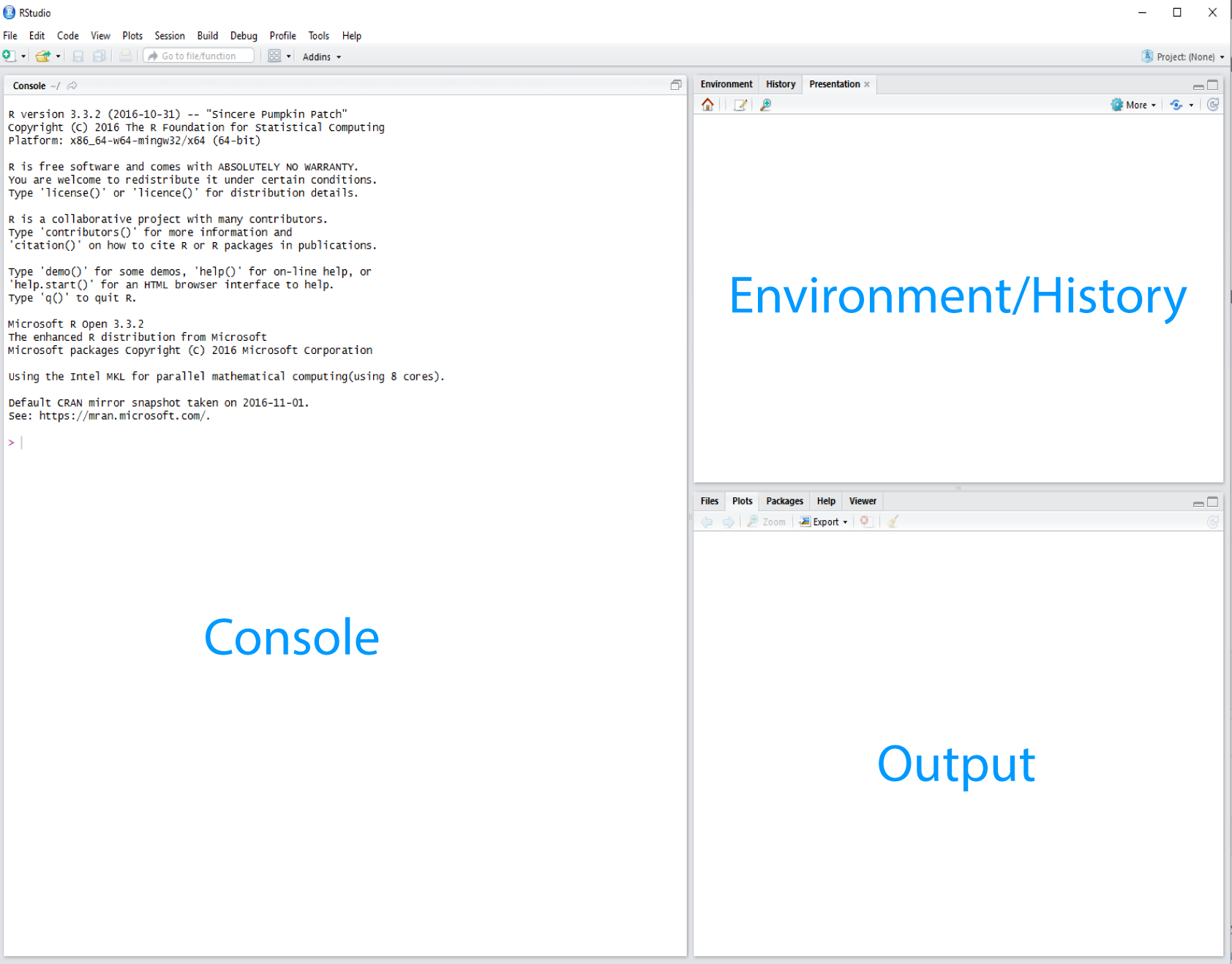The R and RStudio environments
Getting started with data in R
Key concepts that you will learn:
- What is
R? - What is RStudio?
- How do I code in
R?
What are R and RStudio?
We will write code in R, a statistical programming language, using RStudio. RStudio is an “IDE” or an integrated development environment. Basically, if R is the engine of our (statistical programming) car, then RStudio is our dashboard, with all of the controls that we’d be more familiar with (plotting window, file visualization pane, help pane, etc.).

Image from Ismay et al. (2020)
How do I access RStudio?
Please start by logging into sso.posit.cloud/pomona. Once you’ve logged in, you should see the option to open the Conservation Biology Spring 2023 workspace. You can also access the Conservation Biology Spring 2023 workspace at this link.
At the workspace, you should then see the “Assignment” Week 1. Please click on that Assignment. Here is a direct link to the Week 1 project, but it may not work if this is the first time ever or in a while that you’re logging into posit.cloud. If it doesn’t work, no worries - just log in through the sso.posit.cloud/pomona link.
What does RStudio have anyway?
RStudio has 3 different panes:

Image from Bailey (2018)
What do each of these panes do?
- Console: where you enter commands that
Rinterprets- Running code: the act of telling
Rto perform an act by giving it commands in the console.
- Running code: the act of telling
- Environment: lists all objects/data/functions available to you in the current session
- Session: the current instance that you have logged into RStudio (NB: unlike other software, the session doesn’t necessarily end when you close the browser window! Instead, it can preserve its state over time).
- Output: later on, we will interact with this pane most often to display plots that you generate!
- The other tabs in this pane can be used to navigate through files, see available packages that extend the functionality of
R, view help, and view spreadsheets (Viewer).
- The other tabs in this pane can be used to navigate through files, see available packages that extend the functionality of
Running your first R code!
Copy the code below into the console and hit enter. What do you see?
x <- c(1,2,3)
xYou should see the following:
## [1] 1 2 3Congratulations! You have created your first object in R: a vector storing the numbers 1, 2, and 3.
You achieved that by using the assignment operator <- to tell R to create a new object, x, that stores the values 1, 2, and 3 in a vector, denoted by c(...) where the ... is just a placeholder for whatever you’d like to enter (where each element is separated by commas).
I encourage you to try the following:
- How would you create an object to store your first name?
- Hint: what about
myName <- "..." - How would you see what
myNamecontains? (Hint: think about what happened when we enteredxin the console earlier.)
- Hint: what about
- How would you modify the command above to have
xstore the values 1, 47, 4747, and 474747?- Hint: what is wrong with this command?
x <- 1,47,4747,474747? What does that pesky error message say?
- Hint: what is wrong with this command?